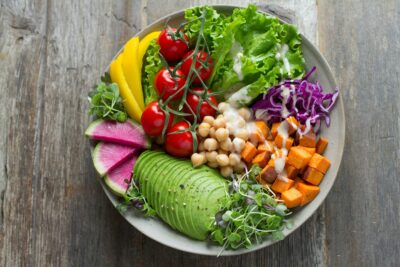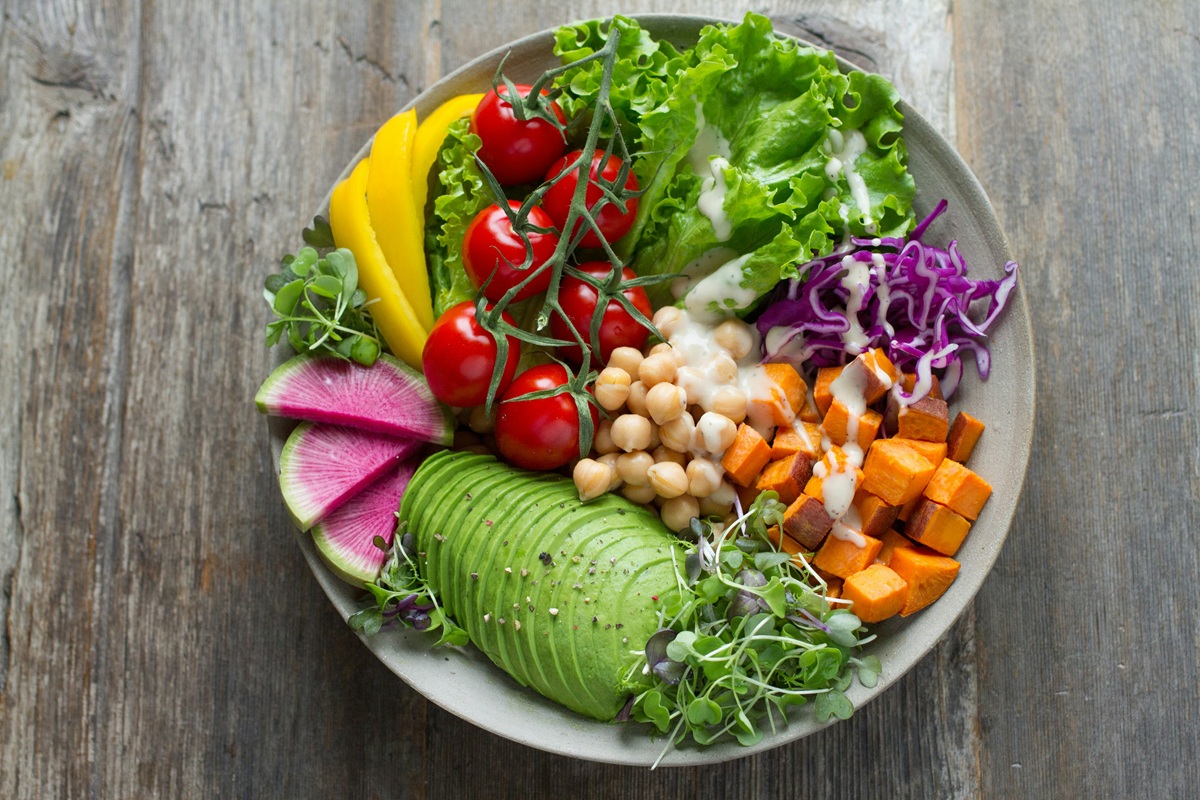The Biggest Food Trends Taking Over America in 2025 Food Lifestyle in America has always change with times. From the fast-food boom which used to hap
The Biggest Food Trends Taking Over America in 2025
Food Lifestyle in America has always change with times. From the fast-food boom which used to happen in 1950s to the organic movement experienced in 2000s, the nation’s eating habits reflects in the larger cultural shifts. In 2025, we’re experiencing another major transformation that blends health, sustainability, new technologies, and indulgence into a new era of dining.The Biggest Food Trends Taking Over America in 2025.

If you’ve been wondering what’s being served (and in the grocery carts) of Americans in the year, here are the biggest food trends in America 2025 and why they really matter for both the consumers and businesses.
1. Gut Health and Functional Foods are key
The Americans are no longer get satisfied with food that just tastes good but they want food that does good for the body and give them a long healthy life. That’s the reason why gut health foods and functional ingredients are dominat this year.
The Rise of Food Fermentation
Food Fermentation starting from kimchi and sauerkraut to kefir and miso, fermented foods are currently booming. These foods contain natural probiotics that nourishes the gut microbiome, which in turn microbiome supports digestion, immunity, and even mental health of human beings.
Even cottage cheese — a once-forgotten ’90s staple — is currently being used by majority of them in snacks, smoothies, and desserts as a high-protein, gut-friendly option.
Beyond Nutrition Labels: The “Benefit Story” lies behind it.
In 2025, consumers are not only counting on the calories; they’re looking for foods that come with a benefit story. That could mean:
The Prebiotic sodas that usually feed healthy gut bacteria.
Protein snacks that are packed keeps energy stable throughout the day.
Fiber-rich foods promote satiety and weight management.
Why Businesses Should Pay Attention: The Biggest Food Trends Taking Over America in 2025
Restaurants and brands that highlight the functional benefits of their products have usually a huge marketing advantage. For example, in the coffee shop that adds kombucha or kefir smoothies to its menu can stand out to be the most crowded market.
Consumers are not just buying food; they’re buying a promise of good health.
2. Sustainable Eating Becomes the Mainstream
Sustainability is no longer a niche concern anymore but a core part of the American food identity. In 2025, eating well is one of the strongest drivers of the behavior of many consumers.
Regenerative Agriculture on the Rise
Unlike traditional farming, regenerative agriculture restores soil health, reducing the emissions of carbon to the environment and improves biodiversity. Products that highlight “regeneratively grown” on labels are quickly becoming favorites in household.
Grocery stores are dedicating majority of the shelf space to items that emphasizes their environmental benefits, while farmers’ markets are educating buyers on the soil health and eco-friendly farming methods.
Zero-Waste and Upcycled Foods
Mojority of Americans are increasingly drawn to upcycled foods such as snacks and meals made from the by products that would otherwise go to waste. Think: chips are made from banana peels, flour from coffee husks, or jams made with the “imperfect” fruits.
This movement works perfectly with current Generations and Millennials’ push toward conscious consumerism.
Packaging of the foods Matters Too
Eco-friendly packaging is another piece of the puzzle. Consumers daily are looking for the brands that ditch plastic for biodegradable, easily recycled or compostable materials.
Why Businesses Should Pay Attention
The Companies that highlight sustainability in their marketing are gaining loyalty from the younger buyers. For restaurants or hotels, reducing food waste and being transparent about sourcing isn’t just ethical but profitable practice.
In fact, studies are showing that the consumers are willing to pay more for food they feel good about eating.
3. Alternative Proteins and Lab-Grown Foods Break Through
Plant-based food has been a big story over the past decade, but in 2025 it has evolved into something much bigger: alternative proteins.
Moving Beyond Fake Burgers
The era of heavily processed fake meats is getting tyo the end. Today’s consumers want whole-food plant proteins such as:
Mushrooms (especially meaty varieties like lion’s mane and oyster).
Jackfruit as a pulled-pork substitute.
Chickpeas, lentils, and other different legumes.
These foods aren’t pretending to be meat; they’re celebrated for their own taste and nutrition.
Lab-Grown Meat Hits Menus
2025 is also the year when lab-grown meat — also called cultivated meat — steps into the mainstream. Cities like New York, San Francisco, and Los Angeles now have restaurants serving cultivated salmon, chicken, and even beef.
The appeal? These proteins require far less land, water, and energy, while reducing animal suffering.
Dairy Alternatives Go Next Level
Oat milk may have started the trend, but now we’re seeing plant-based yogurts, cheeses, and ice creams made from everything from cashews to peas. Some startups are even using precision fermentation to create dairy proteins without the cow.
Why Businesses Should Pay Attention
Food companies which are investing in alternative proteins are attracting not just consumers, but also venture capital. Restaurants that innovate with these ingredients are appealing to younger, eco-conscious diners.
The point is not to replace meat entirely; it’s about giving people more of the choices that align with their values.
4. The Flavor Adventure: Bold, Global, and Fun
While health and sustainability are driving trends, Americans haven’t forgotten about their daily pleasure. Food in 2025 is also about the strong flavors and fun experiences.
Global inspirations: Mexican masa, Szechuan peppercorns, Japanese seaweed, and Middle Eastern spices are currently being consumed in Americans families.
Texture matters: Crunch is king thats from crispy toppings on salads to freeze-dried candy snacks.
Pickle mania: Pickled everything from using cucumbers to carrots to pineapples is currently trending in 2025.
This reflects America’s adventurous palate and its love for trying new things.
5. The Balance Between Health and Indulgence
Its very Interesting that the same consumers who want gut-friendly, sustainable foods have gravings for this comfort.
In 2025, food trending in America are about balance:
One day you’re taking or consuming a probiotic soda, the next day you’re eating loaded nachos.
Freeze-dried desserts are getting popular because they’re both nostalgic and innovative in nature.
Over-the-top comfort foods it remain the most staples in restaurants and food trucks.
Americans are proving that none should not at all have to choose between health and pleasure one can enjoy both.
6. Technology Shapes the Future of Food industry
Artificial intelligence (AI) and food technologies are also leaving their mark in the industry. Grocery apps are using AI to suggest recipes based on the health goals, while food delivery platforms are currently experimenting with the drone drop-offs.
Meanwhile, 3 dimension food printing once futuristic is being explored in the fine dining restaurants as a way to create visually stunning, customizable dishes.
For businesses, embracing food technologies is an indication of staying ahead in both efficiency in engagement of customers.
Conclusion:The Biggest Food Trends Taking Over America in 2025
If one thing is clear, it’s that the future of food in America and other countries is about more than just taste but wellness. It’s about health, sustainability, and innovation all as a package in bold flavors and exciting experiences.
Gut health and functional foods are making wellness a daily part of eating.
Sustainable eating is moving from trend to mainstream expectation.
Alternative proteins and lab-grown foods are redefining what “meat” means.
And through it all, Americans are still finding joy in adventurous and indulgent foods.
For consumers, this means more choices than ever. For businesses, it’s an opportunity to innovate, connect, and thrive in a rapidly evolving food landscape.
One thing is certain: 2025 isn’t just changing what America eats — it’s changing why America eats.




COMMENTS